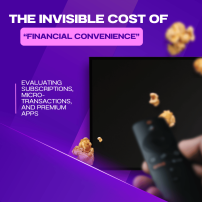For many investors, the dream of passive income is a powerful motivator. Imagine money flowing into your account without needing to actively work for it.
While there are various avenues to achieve this, dividend stocks stand out as a time-tested and popular strategy in the U.S. stock market.
Investing in companies that regularly pay out a portion of their profits to shareholders can create a steady stream of income, making it an attractive option for long-term wealth building and financial independence.
This article will guide you through the world of U.S. dividend stocks, explaining how they work, why they are a compelling investment, and how you can build a robust passive income stream.
What Are Dividend Stocks?
When you buy a share of a company’s stock, you become a part-owner of that company.
If the company is profitable, its board of directors may decide to distribute a portion of those profits to shareholders in the form of dividends.
These payments are typically made quarterly, though some companies pay monthly, semi-annually, or annually.
Dividends are usually expressed as a “dividend per share” (e.g., $0.50 per share). You can also look at the “dividend yield,” which is the annual dividend per share divided by the stock’s current share price, expressed as a percentage (e.g., a stock trading at $100 paying $2 per year in dividends has a 2% dividend yield).
A higher dividend yield means you get more income relative to the stock’s price, but it’s crucial not to chase high yields blindly, as they can sometimes signal underlying problems.
Why Invest in Dividend Stocks?
Dividend stocks offer several compelling benefits for investors, particularly those focused on passive income and long-term growth.
Passive Income Stream
This is the most obvious benefit. Dividends provide regular cash flow directly to your brokerage account.
This income can be used to cover living expenses, reinvested to buy more shares (compounding your returns), or fund other investments.
Compounding Power Through Reinvestment
One of the most powerful strategies for dividend investors is dividend reinvestment (DRIP).
Instead of taking the cash, you use the dividends to automatically buy more shares of the same stock.
This increases your share count, which in turn generates even more dividends in the future, creating a snowball effect over time.
This compounding can significantly accelerate your wealth accumulation.
Sign of Financial Health
Companies that consistently pay and, more importantly, increase their dividends are often financially stable, mature businesses with consistent cash flows and strong management.
Cutting or suspending a dividend is usually a last resort for companies and a major red flag for investors.
Inflation Hedge (for Dividend Growers)
For passive income to truly be effective long-term, it needs to keep pace with inflation.
Companies that consistently raise their dividends year after year (known as dividend growth stocks or dividend aristocrats/kings) can provide a growing income stream that helps combat the eroding power of inflation.
Lower Volatility
Generally, dividend-paying stocks tend to be less volatile than high-growth, non-dividend-paying stocks.
During market downturns, the consistent income stream can provide a psychological cushion and some downside protection.
Key Metrics and Concepts for Dividend Investing
To build a strong dividend portfolio, understanding these metrics is essential:
Dividend Yield
Calculation: (Annual Dividend Per Share / Current Stock Price) x 100%.
What it tells you: The percentage return you get from dividends relative to the stock price.
Caution: A very high dividend yield can be a “yield trap” if it’s unsustainable. It might indicate that the stock price has fallen significantly due to underlying business problems, making the high yield misleading.
Dividend Payout Ratio
Calculation: (Dividends Per Share / Earnings Per Share (EPS)) x 100%.
What it tells you: The percentage of a company’s earnings that it pays out as dividends.
Ideal Range: A healthy payout ratio is typically between 40% and 70%. A very low ratio (below 30%) might suggest the company could pay more, while a very high ratio (above 80-90%) could indicate the dividend is unsustainable and might be cut, especially if earnings decline.
Dividend Growth Rate
What it tells you: How quickly a company is increasing its dividend payments over time.
Why it’s important: Consistent dividend growth indicates a healthy, growing business and provides an income stream that keeps pace with or beats inflation. Look for companies with a long track record of increasing dividends (e.g., 5-10+ consecutive years).
Free Cash Flow (FCF)
What it tells you: The cash a company generates after accounting for cash outlays to support operations and maintain its capital assets.
Why it’s important for dividends: Dividends are paid from cash flow, not just earnings. A company with strong and consistent free cash flow is better positioned to sustain and grow its dividends.
Dividend Aristocrats and Dividend Kings
Dividend Aristocrats: S&P 500 companies that have increased their dividend for at least 25 consecutive years.
Dividend Kings: Companies that have increased their dividend for at least 50 consecutive years.
Significance: These lists are excellent starting points for identifying highly reliable dividend payers with a proven commitment to shareholders.
How to Build a Passive Income Stream with Dividend Stocks
Building a robust dividend portfolio involves more than just picking a few high-yield stocks.
Define Your Goals
Income vs. Growth: Are you primarily seeking current income (e.g., for retirement) or long-term growth through reinvestment? Your goals will influence your choice of stocks.
Time Horizon: How long do you plan to invest? Longer horizons benefit most from compounding.
Research and Select Quality Companies
Focus on Fundamentals: Look for companies with strong balance sheets, consistent revenue and earnings growth, competitive advantages (moats), and low debt.
Diversify Across Sectors: Don’t put all your eggs in one basket. Spread your investments across different industries (e.g., consumer staples, utilities, healthcare, technology, financials) to reduce risk.
Look for a Sustainable Payout Ratio: Avoid companies paying out nearly all their earnings as dividends; they have little room for error.
Check Free Cash Flow: Ensure the company generates enough cash to cover its dividends comfortably.
Consider Dividend Growth History: A track record of increasing dividends is a strong indicator of future reliability.
Utilize ETFs/Mutual Funds for Diversification
For beginners or those who prefer a hands-off approach, Dividend ETFs (Exchange-Traded Funds) or Dividend Mutual Funds are excellent options.
Benefits: They offer instant diversification across many dividend-paying companies, managed by professionals, and often have lower expense ratios than actively managed funds.
Examples: Look for ETFs focusing on dividend growth (e.g., VIG – Vanguard Dividend Appreciation ETF), high yield (e.g., VYM – Vanguard High Dividend Yield ETF), or dividend aristocrats (e.g., NOBL – ProShares S&P 500 Dividend Aristocrats ETF).
Set Up Dividend Reinvestment Plans (DRIPs)
Most brokerage accounts allow you to automatically reinvest your dividends back into the same stock or fund. This is a powerful way to leverage compounding and grow your income stream without actively managing it. It’s the closest thing to true “passive” growth.
Dividend stocks offer a compelling pathway to building passive income and long-term wealth in the U.S. financial markets.
By carefully selecting financially strong companies with a proven history of consistent and growing dividend payments, and by strategically utilizing dividend reinvestment plans and tax-advantaged accounts, investors can create a robust and resilient income stream.
While diligence is required to avoid pitfalls like yield traps and dividend cuts, the power of compounding and the consistent cash flow from quality dividend-paying companies can serve as a cornerstone of a successful investment strategy, helping you achieve your financial independence goals.






